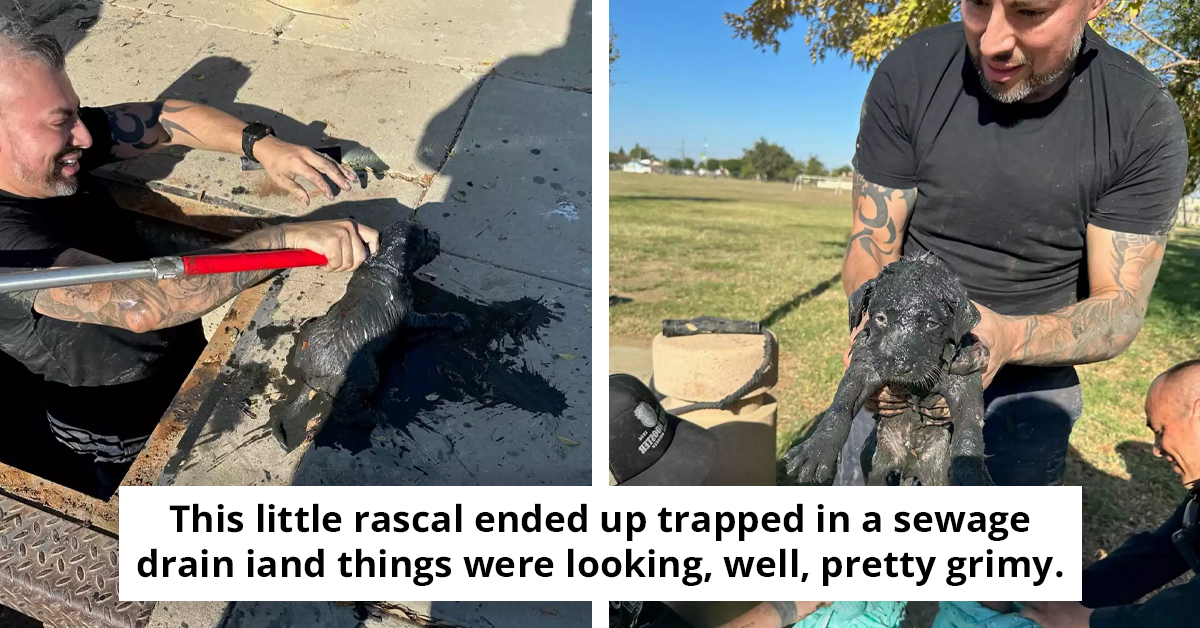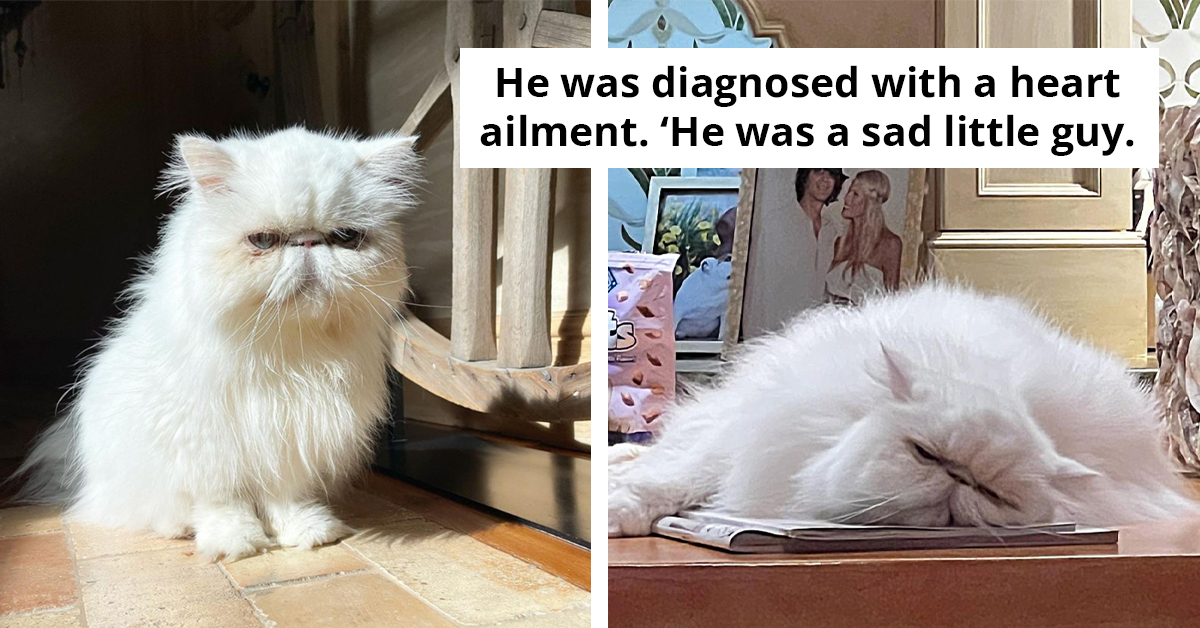Person Asks The Internet For Tips On How To Use "Signs" To Let Their Deaf Dog Know She's A Good Girl
If you're a dog (or any animal) owner, you will know what an important part of the family they become. They're our best friends, our comfort, and our most loyal companions.
For those reasons (and many others), when our dogs become ill or start to get frail with age, we do whatever we can to make them more comfortable. No matter what it takes or how much it costs, we do our absolute best for our furry friends.
Reddit user u/Latte-Fun recently posted to the 'No Stupid Questions' subreddit about their beloved dog. The user explained that their dog had become deaf with age and could no longer understand when she was being praised.
The OP asked for suggestions on ways they could 'sign' praise to their hearing-impaired dog. They were worried the dog might be wondering why she wasn't constantly hearing praise from her owner anymore.
The thread received an overwhelming response, with users offering ideas on signals u/Latte-Fun could use to praise the dog. The Reddit user was surprised to learn that there was such a large community of deaf dog owners out there.
The OP expressed their gratitude for all the kind comments left on their post, and they even shared a photo of the sweet dog in question.
Reddit user u/Latte-Fun asked the online community for ideas on ways to 'sign' to her deaf dog.

They were worried the dog would be sad not hearing praise from her owners.
And the Reddit community (as always) came through with the goods. They had plenty of ideas for the OP.

The OP shared a photo of the sweet dog in question.

Understanding Deaf Dogs and Communication
When it comes to communicating with deaf dogs, non-verbal cues become paramount. Research in animal behavior emphasizes the importance of visual signals and body language in training dogs with hearing impairments. A study published in the Journal of Veterinary Behavior found that dogs can effectively learn to respond to hand signals and visual cues, which makes sign language an effective method for training.
Utilizing signs like 'jazz hands' can create a unique language between an owner and their deaf dog, fostering a strong bond and improving communication.
The Importance of Communication with Deaf Pets
When it comes to communicating with a deaf dog, understanding the principles of non-verbal communication is crucial.
Research in animal behavior suggests that pets respond well to visual cues, which can be an effective way to convey messages.
For instance, using hand signals or even light signals can help deaf dogs understand commands and feel more connected to their owners.
And they thanked the Reddit community for their incredible response.

Here's how people reacted.

"Jazz hands."

From a psychological perspective, the bond formed between an owner and a deaf dog can be uniquely strong. Attachment theory suggests that when owners invest time and creativity into communicating with their pets, it strengthens their emotional connection. Research shows that strong attachments can lead to increased trust and a sense of security for both the pet and the owner, which is particularly vital for a dog that relies on non-verbal forms of communication.
Engaging in regular training sessions using visual cues can enhance this bond and help the dog feel more secure in their environment.
A study from the University of Minnesota highlights that dogs are highly attuned to their owners' body language and can learn to associate specific gestures with actions.
This means that incorporating clear, consistent gestures can significantly enhance communication with a deaf pet.
Such methods promote engagement and help foster a deeper bond.
"A fist pump or something."

Another vote for "jazz hands."

"A thumbs up."

The Importance of Consistency in Training
Consistency is key when training deaf dogs. Behavioral psychology highlights that consistent reinforcement of behaviors leads to better outcomes. A study from the Journal of Animal Psychology indicates that dogs respond positively to clear, consistent signals, which can help in establishing effective communication.
This means that using the same hand signals or visual cues every time will help the dog learn faster, as they will recognize and associate these signals with specific actions or commands.
Creative Approaches to Training
Using innovative methods like 'jazz hands' can be an engaging way to communicate with a deaf dog.
Research indicates that incorporating fun elements into training can enhance learning and retention.
For instance, positive reinforcement, such as treats or affection, when the dog responds correctly, reinforces desired behaviors.
Okay, jazz hands seem to be very popular!

"They understand your face."

Yes! Petting time is the best!

Moreover, the concept of positive reinforcement plays a critical role in training deaf dogs. Research indicates that rewarding desired behaviors with treats or affection increases the likelihood of those behaviors being repeated. By employing an effective reward system, owners can create a positive training environment that encourages learning and engagement.
Incorporating fun elements into training sessions can also help maintain the dog's interest and motivation, leading to a more enjoyable experience for both the owner and the pet.
Moreover, understanding the emotional needs of a deaf dog is essential for effective communication.
Studies show that deaf pets can experience anxiety when they don’t understand what’s happening around them.
Establishing a routine and using consistent signals can help mitigate this anxiety, creating a more secure environment.
A signal even a human could learn. Dogs are much smarter than we give them credit for!

A thumbs up should do it!

Yet ANOTHER vote for jazz hands!

Practical Tips for Owners
For dog owners with a deaf pet, creating an environment that fosters communication is key.
Experts recommend using tactile signals, such as gentle touches or vibrations, to get the dog's attention.
Additionally, training sessions should be kept short and positive to maintain the dog's interest and focus.
Thumbs up appears to be popular too!

Head nodding/bobbing.

"He will figure it out quickly."

Overall, understanding the unique needs of deaf dogs can enhance the quality of life for both the pet and the owner.
As research suggests, building a strong communication foundation can lead to more meaningful interactions and a deeper bond.
Ultimately, this understanding fosters a supportive environment where both parties can thrive.
"Treats and physical contact."

"Whaaaaat!!"

Don't forget to say, "good girl!" Who's to say dogs can't read lips?

u/Latte-Fun was surprised by the large community of deaf dog owners.

"I'm glad your dog has you."

If all else fails, treats are always the answer!

Dogs are most definitely our best friends, and they deserve to receive the absolute best care from their humans. Truthfully, we don't deserve them; so, the least we can do is our utmost to provide them with every comfort we can, particularly in their old age.
What do you think would be a good sign to use for a dog? Have you ever had any experience with a hearing-impaired pet?
We would love to hear your stories in the comments section below. We adore our pets, after all, and love learning new ways to help them be as happy and healthy as possible!
Psychological Analysis
Communicating with a deaf dog presents unique challenges, but it also offers an opportunity for a deeper connection. By focusing on non-verbal cues and positive reinforcement, owners can create a fulfilling relationship with their deaf pets.
Understanding their needs and preferences is essential for fostering this bond.
Analysis generated by AI
Analysis & Alternative Approaches
In conclusion, effectively communicating with a deaf dog requires creativity and an understanding of non-verbal cues.
By fostering a supportive environment and using consistent signals, owners can enhance their relationship with their pets.
This not only benefits the pet's emotional well-being but also strengthens the bond between owner and pet.
Analysis & Alternative Approaches
In conclusion, successfully communicating with a deaf dog requires creativity, consistency, and understanding. By employing visual cues and positive reinforcement, owners can foster a strong bond and enhance their dog's learning experience.
Ultimately, the relationship between an owner and their deaf dog can be incredibly rewarding, filled with unique forms of communication and connection.



